Uptown Students in Smart Streetscapes Program at Columbia Spark Urban Tech Dialogue in Photography Exhibit
The My Streetscape PhotoVoice Exhibit will have its opening night at The Forum on September 27.
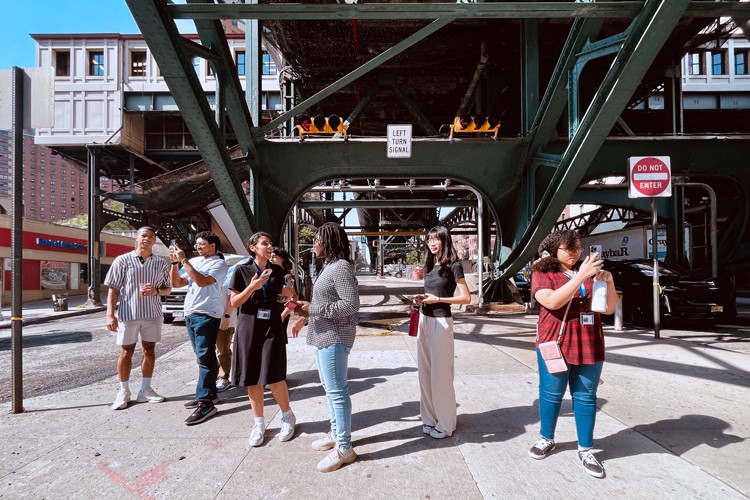
On September 27, local high school students will exhibit photos that tell a story of trust in our city’s streetscapes.
The students—the majority of whom are residents of Harlem and other areas of Upper Manhattan—participated in a paid internship for local high school students developed in collaboration between Columbia University’s Trust Collaboratory and the Center for Smart Streetscapes (CS3).
CS3 is a research center formed in partnership between Columbia and four other universities to investigate how wireless technologies can forge livable, safe, and inclusive communities, with public engagement at their core.
Acknowledging the public’s distrust of emerging technology, one of the questions CS3 hopes to answer is: how can fostering trust become an integral part of the process of technological innovation? This was a question that the students had the opportunity to grapple with this summer.
To tackle this question, students were required to take classes that introduced them to social science research, including how to become interviewers, engage in ethnographic observations, and develop small surveys to capture data that can be used by engineers.
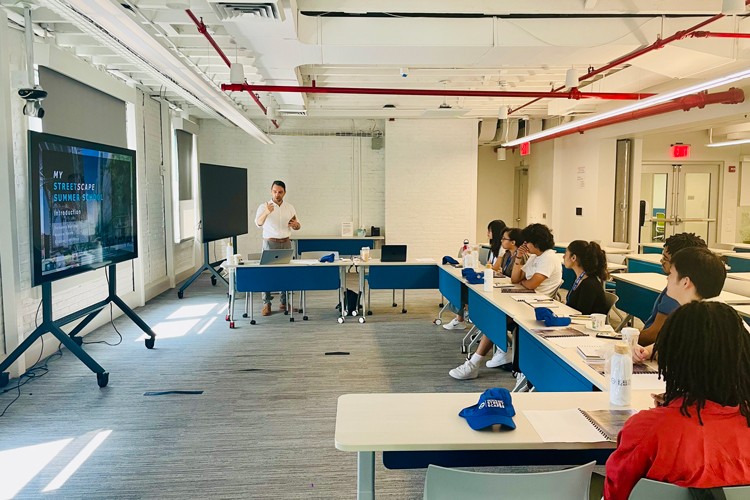
“This program helped me expand on certain aspects of engineering that I didn’t know much about, especially research,” said Christopher Grullon, a high school graduate from Washington Heights and incoming freshman at Columbia. “Now I know that speaking directly to the community and finding out their perspectives are methods I’d need to use as an engineer.”
The Technology Currently on Our Streets
Students also learned about the kinds of technology that currently exists on city streets and how CS3’s research aims to improve upon them.
“I knew about technologies like traffic lights and signs, but this program helped me understand the range of technology that’s actually on our streets,” said Joel Lazcano, a student at Regis High School and resident of East Harlem. “It was very interesting to see how there’s an entire group of people trying to push the technologies to the next level and improve everyone’s lives.”
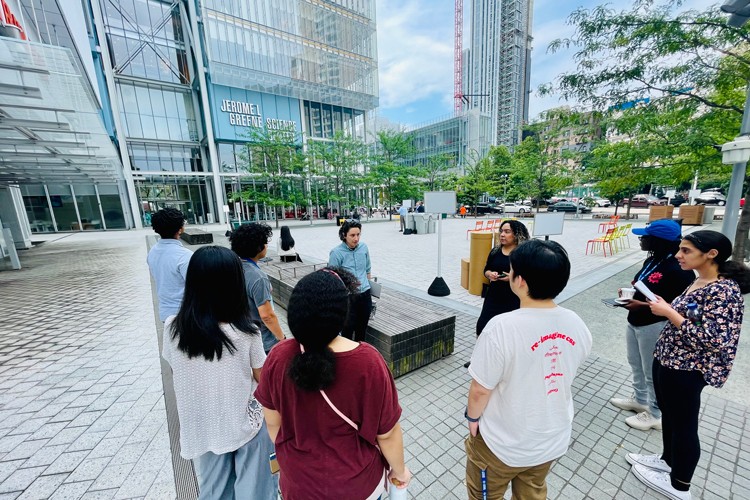
Students also had the opportunity to work directly with engineering teams in the labs, working hand-in-hand with research teams and bringing a different perspective to the table.
“Our group got to take part in improving an AI object detection model in one of the labs we worked with,” said Ezra Ju, a student at Columbia Secondary School and local resident. “The lab uses this model to help figure out how to improve traffic congestion. Before we joined the lab, it was only able to model pedestrians, vehicles, and cars. We helped develop the model so it can detect more players that make use of the city’s streets—like buses, motorcycles, and mopeds.”
Local Expertise at the Core
The core function of the My Streetscape Summer School program was to help introduce a new approach to how academic knowledge around urban technology is produced in consultation with the Harlem community. By actively involving local youth researchers with intimate knowledge of their own neighborhoods, a more community-driven process to collecting, studying, sharing, and disseminating data is formed.
But students didn’t just rely on their own lived experiences. As part of their final research project, students consulted with residents about their needs and desires when it comes to new technology, speaking with residents everywhere from Columbia Deli on 125th Street to the Jackie Robinson Senior Center at the Grant Houses. Their final presentations housed new ideas, their research findings, and other insights that were presented to teams of engineers this past August.
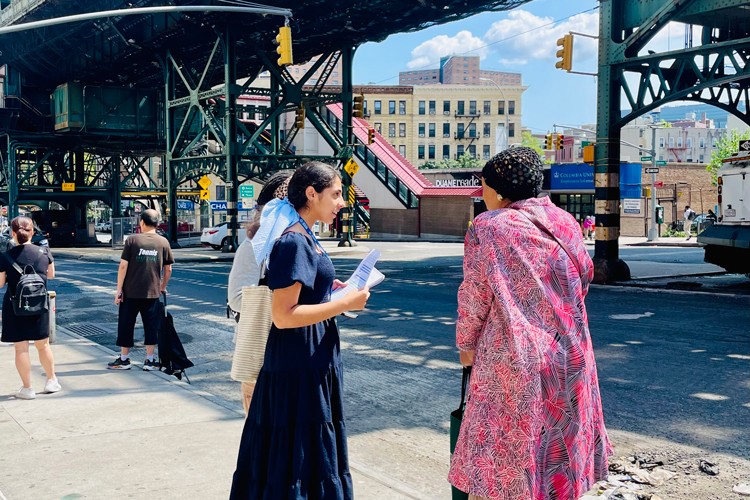
When reflecting on their data, students found that safety was a priority among many conversations with longtime residents.
“People who have been in Harlem for many years cared more about their safety and security,” said Susan (Susie) Cao, a senior at NYC Lab High School. “In comparison, visitors and short-term residents cared more about their privacy.”
Joel Lazcano noted a similar sentiment among his interviewees, who also stressed the need for transparency: “People agreed that safety is something they’d want from anything that gets put on the street, but they’d also want to know what they gain and what they lose from these technologies. Nobody wants to feel left out.”
The Nuts and Bolts of Building Trust
Facilitating the kind of trust Lazcano is referring to is the central focus of The Trust Collaboratory’s work with CS3.
“One of the priorities of the NSF grant is to prompt engineers and data scientists to think about how their work ideating, developing, and implementing these technologies resonates with society,” Cristian Capotescu, Associate Director of The Trust Collaboratory at Columbia University, explained. “It’s about how community engagement in Harlem and participatory public-facing formats might foster trust in CS3's research and critically shape the work of engineers and data scientists in the process.”
As part of this broader effort, the My Streetscape Summer School, already confirmed to run again next year, is just one of CS3's multiple initiatives meant to engage the local community. Another such effort Is the upcoming “My Streetscape Photovoice Exhibit,” which will premiere at The Forum on Columbia’s Manhattanville campus.
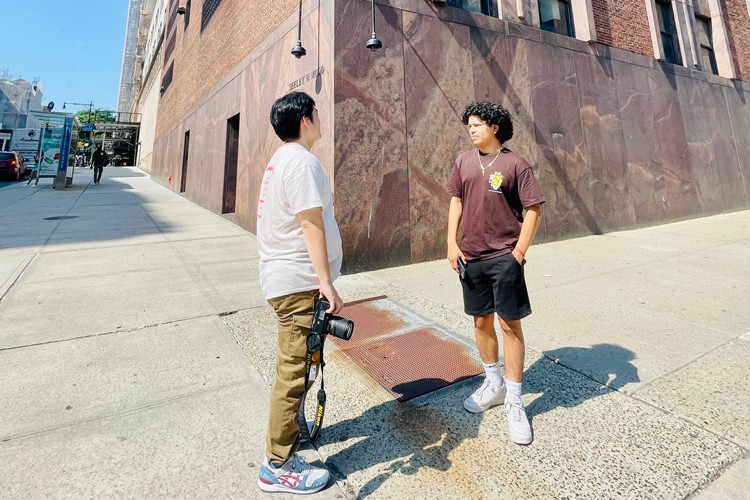
The photographs, shot by the summer school students, draw upon their individual research findings using a technique called PhotoVoice. In June 2022, The Trust Collaboratory created a PhotoVoice exhibit that displayed photographs taken by community health workers to illuminate their story.
This time around, Capotescu finds that “trust” is a central theme to the photos that the students will be presenting.
“Trust is what binds the relationship between technology and the community,” said Capotescu. “I hope that the exhibit will resonate with community members and that they can recognize their concerns and their hopes for the future of the streetscape in these photos.”
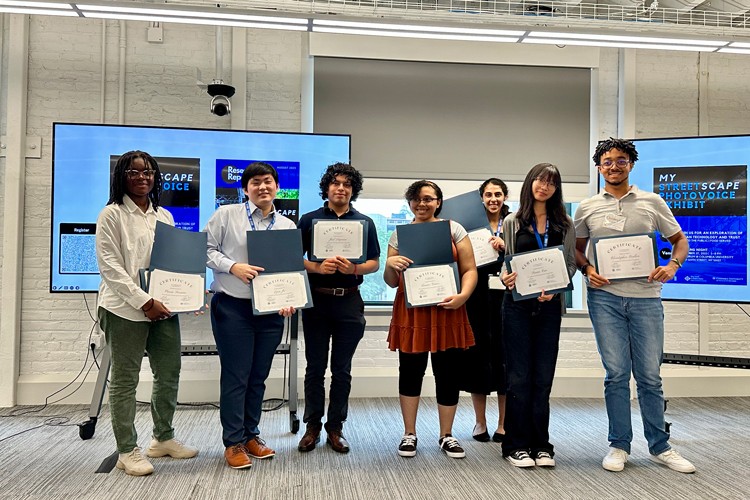
For Ezra Ju, “beautiful community” are the two words that come to mind when he thinks about his photo.
“It was a really beautiful day, and there was a sunny spotlight on the people that were gathering at the senior center,” said Ju. “I wanted to show the Harlem community in its diversity and vibrance, and emphasize that you can’t tell any story about Harlem without including this community.”
To see the student’s PhotoVoices, register for the My Streetscape PhotoVoice exhibit at The Forum on Columbia's Manhattanville campus on September 27. To learn more about next year’s program, contact Cristian Capotescu at [email protected].